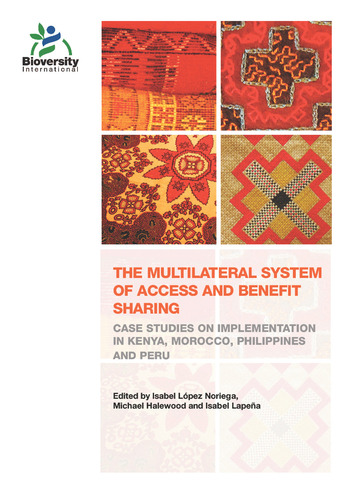The multilateral system of access and benefit sharing: Case studies on implementation in Kenya, Morocco, Philippines and Peru
The International Treaty on Plant Genetic Resources for Food and Agriculture (the Treaty) was adopted in 2001, after eight years of negotiation, and came into force in 2004. Its objectives are the conservation and sustainable use of plant genetic resources for food and agriculture and the fair and equitable sharing of the benefits arising out of their use, in harmony with the Convention on Biological Diversity. The Treaty creates the multilateral system of access and benefit sharing (multilateral system), through which contracting parties agree to provide facilitated access to genetic resources of sixty-four crops and forages that are crucial for food security worldwide. The multilateral system can be seen as the most advanced expression of countries’ intention to co-operate in the conservation, distribution and use of plant genetic resources for food and agriculture, and it constitutes a central element in a global system in which different types of users around the world share both responsibilities and benefits in the conservation and use of plant genetic resources. The multilateral system can be implemented only if countries’ governments, international organizations and individual users worldwide embrace its collaborative spirit and approach plant genetic resources conservation and use as a joint international effort. Effective collaboration depends upon understanding the perspectives of the different stakeholders. The four national case studies presented in this volume – focusing on Kenya, Morocco, Peru and the Philippines – were commissioned as part of an effort of the centres of the Consultative Group on International Agricultural Research (CGIAR) to better appreciate the incentives and disincentives that countries and their constituent interest groups have to engage (or not) in the multilateral system. They are expected to help the CGIAR centres and other international organizations to orient their support towards the implementation of the global system, and the Treaty, in particular, with a wider vision of countries’ expectations and constraints for international co-operation in the conservation and use of plant genetic resources for food and agriculture. These case studies should also be useful for other countries that are engaged in implementing the multilateral system domestically in order to see how the four countries highlighted in the volume ‘frame’ the challenges and identify options for effective participation in the system.

